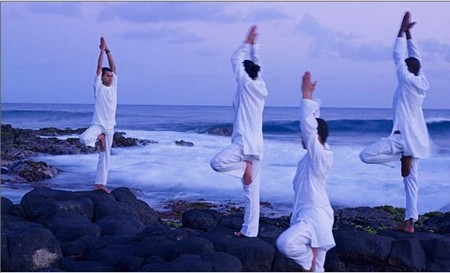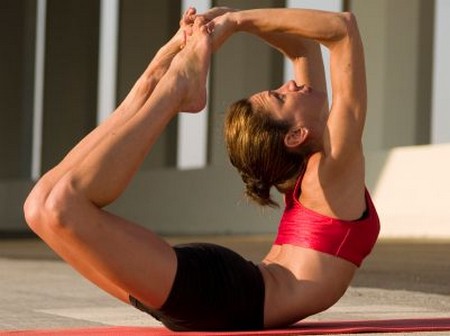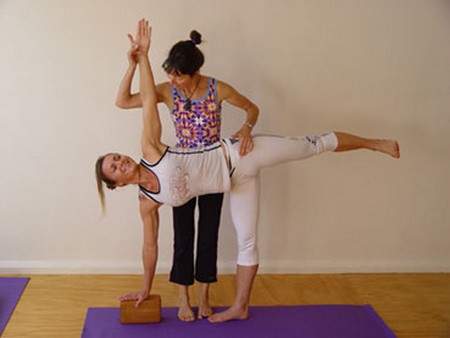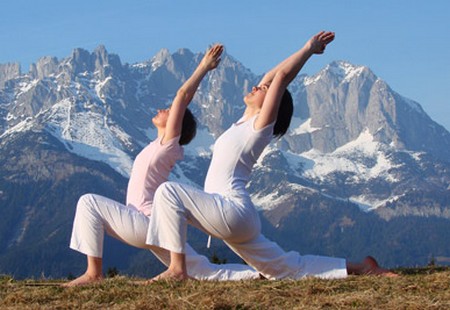In India and its neighboring areas, yoga has been practiced for more than thousands of years and is mainly associated with the Hinduism, Buddhism and Jainism. Yoga is used as a source of meditation which helps the Yogi to connect their verbal, mental and physical energies. In recent few years, Yoga has gain popularity in the West also as a result of which many Yoga schools has surfaced in several cities. Yoga is a broad term based on several iterations and many different forms of practices which make the task hard for an individual who is interested in Yoga to select a right kind of practices. Some of the major types of Yoga are mentioned below which will certainly help you choosing the one according to your needs or interests.
Ananda Yoga: The main goal of the Ananda yoga is to transmit the energy up to the brain and make the body ready for meditation by employing gentle postures. This type of yoga also helps to maintain the proper body alignment and breathing.
Anusara Yoga:
It is a recent phenomenon developed somewhere in 1997. Anusara yoga is a form of yoga that combines stern doctrine of alignment with a frisky spirit. Although, you may find the postures challenging, the main job of the Anusara is to attempt to link with the divine in yourself and also to open up your heart.
Ashtanga (or Astanga) Yoga:
This sort of yoga was taught by Sri K.Pattabhi Jois. Ashtanga is a tough style of yoga which demands physical strength as synchronizing of breath is required with progressive and successive series of postures. The practices involve result in excessive heat and purifying sweat which helps detoxify organs and muscles. This in result enhances the circulation, stamina, flexibility. You will feel light with strong body and a calm, relaxed mind. This style of yoga is not for beginners as it involves some demanding physical practices.
Bikram Yoga:
In this style of yoga an extensive workout is involved which is essential to keep the fitness level intact such as weight loss, muscular strength, muscular endurance, and cardiovascular flexibility. It is named after Bikram Choudhry who was a founder of this style of yoga and was an Olympic gold medalist in the weight lifting event in 1963. He was a follower of Bishnu Ghosh, brother of Paramahansa Yogananda. Bikram yoga is the only style which makes use of the heated environment, i.e. the practices are carried out under the temperature of 95-105 degrees to ensure the flexibility, detoxification and prevention of injuries.
Hatha:
Hatha is style of yoga that everyone can learn easily. Hatha is considered as the base of all the yoga styles as it combines several styles such as Asanas (postures), kundalini (Laya Yoga), Meditation (Dharana & Dhyana), and Pranayama (controlled breathing) together in a single form in order to attain self realization and enlightenment. In the recent few years, this form of Yoga has become extremely popular in the United States. People practice it for the sake of stress management and as a form of exercise.
Integral Yoga:
It is a classical form of yoga that incorporates different techniques such as postures, meditation, self inquiry, and selfless service, prayer, breathing exercises and chanting.
ISHTA:
ISHTA is an acronym for ‘Integral Science of Hatha and Tantric Arts’ and was developed by Mani Finer, a South African teacher. His son Alan brought this style of yoga in United States. The idea behind this form of yoga is to open energy channels within the entire body by employing different mediations, postures and visualizations.
Iyengar Yoga:
This form of yoga was developed 60 years ago by yoga master B.K.S Iyengar. The area of focus is to promote endurance, strength, flexibility and balance through controlled breathing and postures. With this style of yoga, the practitioner slowly moves into one posture and wait for a minute or two. He then takes some breathing and moves to the next posture. There are certain props or supports which are used in this form of yoga, including cushions, blocks, blankets and straps. Iyengar yoga also combines some classical asanas and postures to facilitate the practitioners who practice this yoga. Iyengar yoga is extremely useful in case you are in recuperation process after injury.
Jivamukti Yoga:
This form of yoga was first developed by Sharon Gannon and David Life in 1986. They both are currently running a famous yoga studio in the New York City. The Jivamukti yoga style revolved around the spiritual and ethical perspectives of yoga practice. This form of yoga laid emphasis on Sanskrit chanting, scriptural study, meditation, devotion to God, vegetarianism, role of music and listening in the yoga, and non-violence.
Kali Ray TriYoga:
It involves a series of dancelike or flowing movements and was first developed by Kali Ray somewhere in 1980. Kali Ray also operates a TriYoga Center in Santa Cruz, California. This form of yoga also involves meditation and pranayama.
Kripalu:
Kripalu is known as the yoga of consciousness. It is considered as a soft, meditative practice which helps the practitioners to expunge emotional and spiritual obstructions. It basically involves three stages: Stage One is all about learning and understanding postures and also discovers what your body can do. Stage Two focuses on maintaining a posture for a longer time in order to develop inner awareness and concentration. Stage Three involves spontaneous and unconscious movement from one pose to another.
Kundalini:
This form of yoga style focuses on developing the energy at the base of the spine and moves it upwards. This form of yoga also combines other breathing exercises, chanting and meditation.
Power Yoga:
Power yoga is an American version of Ashtanga yoga. It involves immense aerobic workout. Like Ashtanga, it incorporates stretching, meditative breathing, bending and strength training. The only difference between the two is that power yoga demands continuous practice as there is no pause or break between different exercises. The pace involve in the power yoga is its distinctive characteristic.
Restorative Yoga:
Restorative yoga doesn’t involve intense workout rather in this form of yoga the practitioner spend most of the time lying on the yoga bolsters, blocks, or blankets to allow their muscles to relax.
Sivananda Yoga:
This form of yoga includes meditation, postures, controlled breathing, dietary restrictions, scriptural study and chanting. Lilias, a famous yoga teacher started her practice from Sivananda yoga.
Svaroopa Yoga:
This form of yoga concentrates on healing and transformation. Beginners usually find this style amazing and comfortable to start with.
Viniyoga:
Viniyoga is known as a healing practice and is good for those suffering from injuries or recovering from any sort of surgery. It is a kind of therapeutic practice.
Vinyasa:
It demands an active physical participation from the practitioners. It concentrates on controlled breathing and body movements. It was first developed by Krishnamacharya and transferred to Pattabhi Jois.
White Lotus Yoga:
It is a modified version of Ashtanga yoga, and was developed by Ganga White. It focuses on meditation and breath work.







